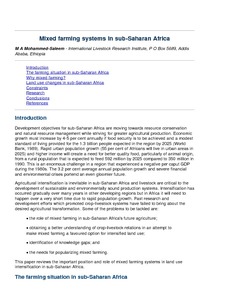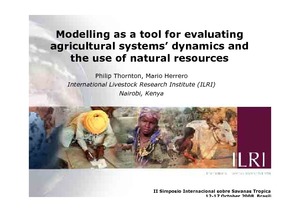Micro-level analysis of farmers adaptation to climate change in Southern Africa
Mixed farming systems in sub-Saharan Africa
The important position and role of mixed farming systems in land use intensification in subSaharan Africa is reviewed. This is done by examining the current situation that is followed with a justification for mixed farming. Further sections follow on changing patterns of land use, including the effects of tsetse flies and trypanosomiasis, and on constraints to further crop-livestock integration.
Mixing and matching: Combining ‘best bet’ practices into rainwater management strategies suited to the local environment
Modeling and scenarios of ecosystem services in the Volta Basin: Tradeoffs and plausible interventions to enhance resilience
Messages from the Ganges Basin Development Challenge: Unlocking the Production Potential of the Polders of the Coastal Zone of Bangladesh through Water Management Investment and Reform
The coastal polders of Bangladesh are characterized by extremes in terms of both challenges and opportunities. The polders are home to about 8 million people, where 85% of rural householders live under the national poverty line. The polders are subjected to flooding during the rainy season; drought and salinity during the dry season, and cyclones. In addition, the impacts of climate change, especially sea level rise, will be most severe in this region.








